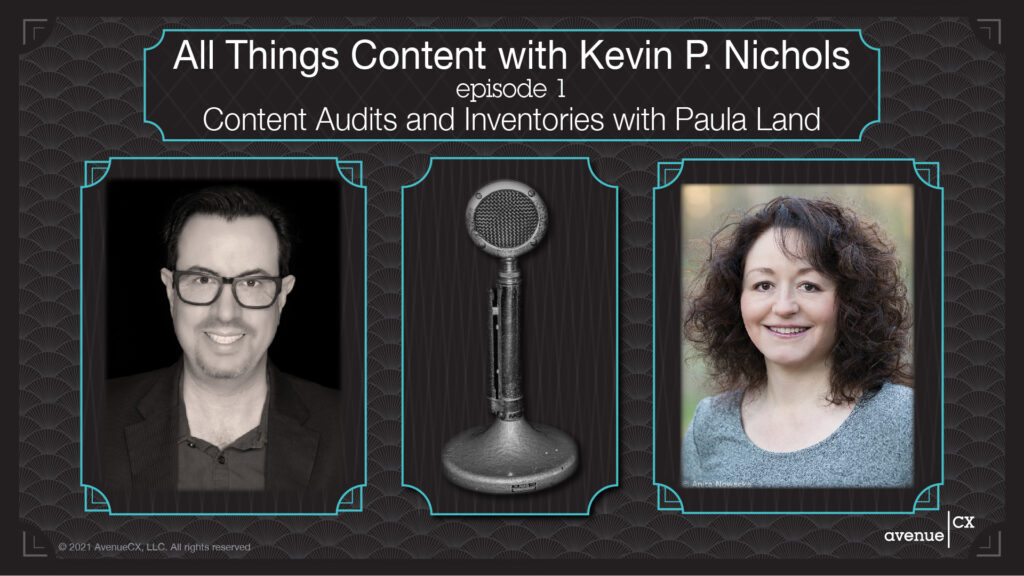Content Audits and Inventories with Paula Land: All Things Content Podcast
For my very first All Things Content podcast, I wanted a guest who could help set up my show with a topic that spoke to many different factors regarding content and content strategy. Paula Land stood out as an obvious choice. Why? Because not only does her knowledge span a variety of content topics, but she also remains one of the foremost authorities in auditing content for more effective business and customer outcomes. And content audits are a valuable methodology in helping to drive the most effective content experiences for businesses. In her recently released book, “Content Audits and Inventories: A Handbook for Content Analysis 2nd Edition,” Paula makes the case for the importance of audits and inventories as both a precursor to a content improvement project and a critical part of ongoing content governance.
I often say that much of content strategy begins and ends with what we call a content type. Content types form the basis of a content experience and provide us with a sense of how the overall content experience manifests. But the fact remains, content audits and inventories form what may be an even more important basis. It is from a content audit that we content strategists and content creators make our judgments. Vis-a-vis the content audit, we plan for future content, evaluate customer trends, design new content experiences, and understand where and how our content needs to take shape.
Similar to the way that Grand Central Station in New York City is the hub to various destinations in NYC and beyond, a content audit provides the foundation and North Star for an organization to make content decisions. Think of it as a compass, which grounds the reality for content decisions. Done correctly, an audit can guide a brand to the various conclusions that lead to making competent, informed, and data-driven decisions around content. For example, if a website catering to pets uncovers that the most viewed content on its website includes topics pertaining to medical issues and cats, your editorial strategy and planning might include the following recommendation: We should consider creating more topics surrounding cat health because our top search queries and engagement metrics make clear that our customers desire content in this area, and we only a few a such stories on our current website. A content audit does not just look at a content inventory, but also the analytics, customer insights, and business decisions that drive the development and management of the existing content in the first place.
In my inaugural show, Paula and I delved into why a content audit for the Wall Street Journal failed and what a content audit means for an organization, and how to set one up appropriately. Paula speaks of a “clear and well-communicated mandate” to align key stakeholders at the beginning of the process on the objectives of the audit and the expectations. She offers such insights as the benefit of leveraging other folks than those responsible for the content to audit the content when possible. She notes that successful audits start with objectives, and she concludes the show with the following wisdom: “This is not the work, this is the preparation for the work.” Meaning that although an important project, an audit is the starting point for all that follows, whether ongoing or future content creation or an entirely new approach or platform.
Note: My podcast was recorded in August 2021, but everything we discuss in it remains relevant and timely. After listening to it, make sure to head to your favorite bookstore and ask them to order you a copy of Paula’s new book. If you don’t have a bookstore nearby, then by all means, order it from Amazon.
You can view or listen to the Podcast:


Comments are closed